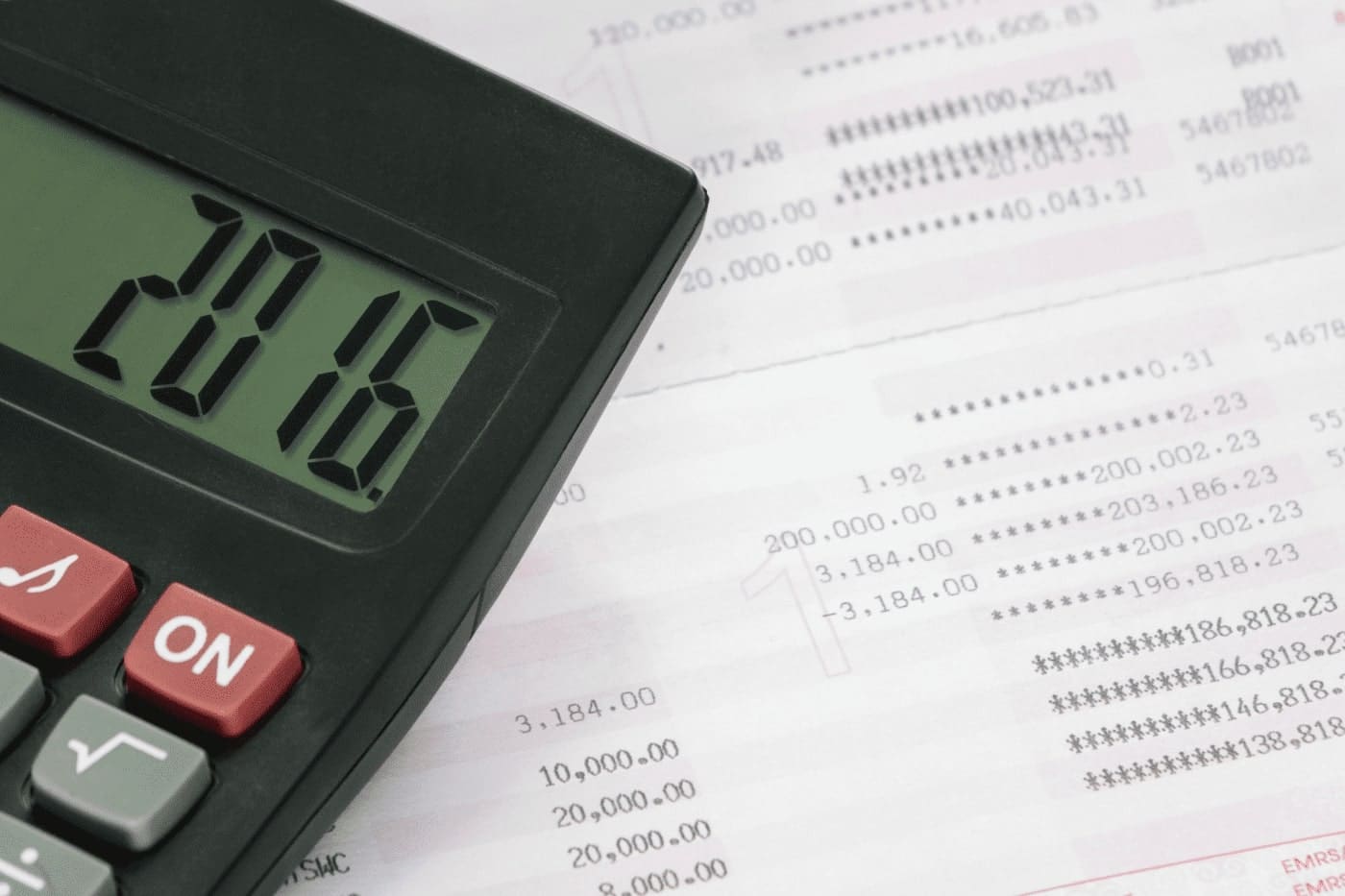Finance Reconciliation: Step by Step Process

Finance reconciliation is a process that all businesses know very well. To ensure the accuracy of financial statements, businesses must perform a financial reconciliation. This can be done manually, but its time-consuming nature and intense attention to detail make a reconciliation process well-suited for automation.
While each business performs financial reconciliation on its schedule, most follow the same steps. Here, we will explore everything you need to know about account reconciliation, from the definition to the steps to how automation can help.
Coming Up
Definition: What is Finance Reconciliation?
Finance reconciliation is the accounting process of reconciling financial records to ensure they match. Most companies perform a general ledger reconciliation, as it's an all-encompassing record. Reconciliation processes help ensure accurate financial records. They ensure that the money leaving an account accurately matches what is being spent and that money entering an account is accurately reported.
To ensure the accuracy of financial data, accountants will compare financial statements to external source documents (like bank statements or credit card statements) to ensure they are aligned. One of the most important aspects of performing a finance reconciliation promptly is stopping fraud or avoiding errors quickly.
Some internal records will indeed have discrepancies because of timing differences. For example, if you have made a deposit that has not yet been reflected in your bank statement because of lag time, records may not match on the day you perform the reconciliation process. These explainable differences are okay. However, unexplainable differences must be investigated and rectified, which are all part of the reconciliation process.
Additionally, financial reconciliation relies on financial standards. The generally accepted accounting principles (GAAP) are standards by which businesses compile financial statements. GAAP can only be upheld if records are correct. Financial reconciliation plays a large role in ensuring this because it validates internal documentation from external sources and vice versa.
Financial reconciliations are mandated for public companies as one of the most important internal controls for a business's financial health. Their financial close is only complete once the process has been performed. Since public companies have to behold promises to shareholders, the reconciliation process is also regulated. This means that the accuracy is even more important because mistakes can cause serious ramifications and increase compliance risk.

How do you Reconcile Financials?
Given the critical nature of a financial reconciliation for maintaining accurate financial information, here's a comprehensive guide on how to reconcile your financials:
1. Gather and review documents (like financial statements)
Collect all relevant financial records, including:
- Bank statements
- Credit card statements
- General ledger reports
- Invoices and receipts
- Any other pertinent financial documents
2. Compare financial transacitons
Carefully compare your internal financial records against external statements:
- Match transactions in your books to those on bank/credit card statements
- Identify any discrepancies or missing entries
- Mark off matching transactions as you go
How to Reconcile Financials: Step-by-Step Process
Financial reconciliation is a crucial process for maintaining accurate financial records. Here's a comprehensive guide on how to reconcile your financials:
1. Gather Necessary Documents
Collect all relevant financial records, including:
- Bank statements
- Credit card statements
- General ledger reports
- Invoices and receipts
- Any other pertinent financial documents
2. Compare Financial Transactions
Carefully compare your internal financial records against external financial statements:
- Match transactions in your books to those on bank/credit card statements
- Identify any discrepancies or missing entries
- Mark off matching transactions as you go
3. Investigate Discrepancies
For any differences found:
- Determine the cause (e.g., timing differences, errors, fraud)
- Gather supporting documentation
- Make necessary adjustments to your records
4. Make Adjusting Entries
Record any required adjustments in your accounting system:
- Enter missing transactions
- Correct errors
- Account for bank fees, interest, etc.
5. Confirm Ending Balances
After adjustments, verify that:
- Your ending balance matches the statement balance
- All transactions are accounted for
- Any remaining differences are explained and documented
6. Document the Process
Create a reconciliation report that includes:
- Starting and ending balances
- List of reconciling items
- Explanations for any discrepancies
- Sign-off by reviewer
7. Review and Approve
Have the finance reconciliation reviewed and approved by a supervisor or manager.
By following these steps consistently, you can ensure your financial reporting is accurate and up-to-date. A regular reconciliation helps catch errors early, prevent fraud, and provide reliable financial data for decision-making.
Understanding Account Reconciliation: Double-Entry
The generally accepted accounting principles recommend double-entry accounting to make the reconciliation process more accurate. Double-entry means that for every transaction in the accounting general ledger, there is a record in two places. The record gets marked in the income statement and balance sheet.
One will receive a debit, and the other will receive a credit. That way, they zero each other out. For example, if there's a sale, the debit goes into the accounts receivable or accounts payable section of the balance sheet. The income statement will have a credit with the matching amount listed as revenue.
It serves as a check and balance, literally and figuratively. This makes it harder to make a mistake because you can always find the corresponding record that should match up.
Reconciliation in Business Accounting
Some businesses perform account reconciliation daily, weekly, or monthly. Most commonly, reconciliation is performed each month after the books are closed for the previous month.
Businesses must ensure that their general ledger account is correct since it serves as the company's books and is the basis for many financial decisions. As a business owner, one of the biggest challenges faced in financial reconciliation is the process's timeliness and the data's accuracy. This is where automation comes in to aid the process. Automation tools can pull together data from various sources in seconds and only notify your team when there's an anomaly.
This means that your finance department can spend time on high-level tasks rather than monotonous tasks like collecting and checking the right data for errors. We'll come back to this soon!
What are the three types of reconciliation?
1. Bank Reconciliation
Bank reconciliation is the most common and essential type of reconciliation in accounting. It involves:
- Comparing transactions recorded in your company's ledgers to the monthly bank statements
- Cross-referencing supporting documents like invoices and receipts against bank statements
- Identifying discrepancies or missed payments
- Ensuring the accuracy of your cash balance
2. Vendor Reconciliation
Vendor reconciliation focuses on accounts payable and involves:
- Reviewing your accounts payable records
- Comparing them with statements provided by vendors and suppliers
- Ensuring you've paid the correct amounts
- Identifying any discrepancies between your records and those of your vendors
3. Customer Reconciliation
Customer reconciliation deals with accounts receivable and includes
- Comparing your financial records with those of your customers
- Tracking incoming cash and outstanding payments
- Verifying the accuracy of invoices sent against accounts receivable ledger records
- Adjusting company accounting records to reflect the correct amount owed by customers
While these are the three main types, it's worth noting that there are other important forms of reconciliation, such as intercompany and inventory, which may be crucial depending on the nature and structure of your business.
Why Reconcile Your Accounts? Benefits & Purpose
Any process that helps a business know its financial health is correctly reflected is worthwhile. Account reconciliation aims to help avoid overdraft charges, fraud, or incorrect credit card transactions.
Furthermore, account reconciliation helps your company manage its money well. Your balance sheet needs to be right and can be made so with account reconciliation. Also, reconciling your accounts is not a choice for a public company. You can face serious penalties by independent auditors if your books aren't being maintained honestly.
The benefits of account reconciliation are clear, namely:
- Detecting and correcting errors like double payments or missed payments
- Spotting fraudulent transactions, unauthorized transactions, and significant discrepancies
- Keep track of incoming and outgoing funds
- Add bank fees to your books
- Ensure your books are accurate
When deciding how to allocate funds or whether a new venture is feasible, your books must be right in real time. Account reconciliation will help you make better decisions on the fly, as your business's financial health will be well-managed.
Reconciliation Process Best Practices
When conducting your account reconciliation regularly, keep in mind these best practices and concepts:
- Activity accuracy: Your reconciliation process should be used to verify that financial transactions are correct. This means that for every type of activity, it's recommended to have documentation saved to support it. Activities should be monitored and standardized through approval processes. Take an expense report as an example. You'll want that every employee fill out the same necessary information and provides supporting evidence to show what each line item reflects. A clear process outline for your internal control will make the process flow seamlessly.
- Error correction: There's no doubt that errors are bound to occur. It's important to focus on the timeliness of their resolution rather than getting caught up in the fact there's been a mistake. As such, it's beneficial to have a process established by which your team can rectify issues. This can be a checklist of potential places to investigate for how an issue may have arisen in the first place. It should then also outline the steps to fix it and the kind of documentation needed to show what has been done.
- Documentation: Since reconciliations are consistently performed, they should be standardized and consistent. Automating the process is one of the best ways to ensure this happens. In any case, you can have a clear outline of the process. This will involve each step, who is responsible for it, how much time it should take, and what the error correction process should be.
Manual Reconciliation to Automation
Like with any process, introducing automation solutions can make it more efficient. Automation has streamlined account reconciliation into an easily repeatable list of steps. Accounting teams once relied on Microsoft Excel spreadsheets to manually compare data. It's easy to see how time-consuming and inefficient that can be.
The manual reconciliation process is highly error-prone because the heavy emphasis on numbers can easily lead to keying errors. When humans are not required to intervene in the low-level tasks of data sourcing and entry, they are free to focus on more important analytical considerations.
With an automation tool, you can harness the power to pull data from various sources and compare the numbers in seconds. This means you can reduce your operational costs, increase productivity, reduce audit risks, actively manage the risk of fraud, and boost internal controls. Plus, errors are easy to see as the system can alert your team of anomalies. If all looks good, the process can move through to approval quickly. If there are any issues, then your team will be flagged and can conduct investigation to fix the problem.
Electronic reconciliation ensures you have an up-to-date view of your business's finances. From data validation to recording information, you can easily run reports and provide audit trails if needed.
Automation and Auditing: The Benefits
Reconciliation process is a key part of the financial close process and is regulated. Automation software provides unparalleled benefits for audits.
You can leverage standardized templates and run the process in the cloud. With a template, the system will know what information to roll forward, what formulas to use, and what documents must be attached for support. All the data is stored in a centralized, easily accessible, yet secure location, so anyone who needs to take a look will have access to do so.
Furthermore, with an automation solution, you can document and share the reconciliation process so that your team members know exactly what they are responsible for. It makes it easy to see where the process is at any given time so that employees know the current status and are less likely to miss deadlines.
The Bottom Line
Financial reconciliation is a key process in every business. Using an automation solution, you can streamline your financial operations, ensure accurate financial reporting, and rest assured with easy-to-run audit reports.
FAQ
Intelligent reconciliation solution
Intelligent rebate management solution
Intelligent financial automation solution
Intelligent Financial Automation Solution
Intelligent financial automation solution
Intelligent financial automation solution
Intelligent financial automation solution
Intelligent financial automation solution
Intelligent regulatory reporting solution
Free up time and reduce errors
Recommended for you

Request a Demo
Book a 30-minute call to see how our intelligent software can give you more insights and control over your data and reporting.

Reconciliation Data Sheet
Download our data sheet to learn how to automate your reconciliations for increased accuracy, speed and control.

Regulatory Reporting Data Sheet
Download our data sheet to learn how you can prepare, validate and submit regulatory returns 10x faster with automation.

Financial Automation Data Sheet
Download our data sheet to learn how you can run your processes up to 100x faster and with 98% fewer errors.

Financial Automation Data Sheet
Download our data sheet to learn how you can run your processes up to 100x faster and with 98% fewer errors.

Financial Automation Data Sheet
Download our data sheet to learn how you can run your processes up to 100x faster and with 98% fewer errors.

Financial Automation Data Sheet
Download our data sheet to learn how you can run your processes up to 100x faster and with 98% fewer errors.

Financial Automation Data Sheet
Download our data sheet to learn how you can run your processes up to 100x faster and with 98% fewer errors.

Financial Automation Data Sheet
Download our data sheet to learn how you can run your processes up to 100x faster and with 98% fewer errors.

Rebate Management Data Sheet
Download our data sheet to learn how you can manage complex vendor and customer rebates and commission reporting at scale.

Top 10 Automation Challenges for CFOs
Learn how you can avoid and overcome the biggest challenges facing CFOs who want to automate.
.svg)









